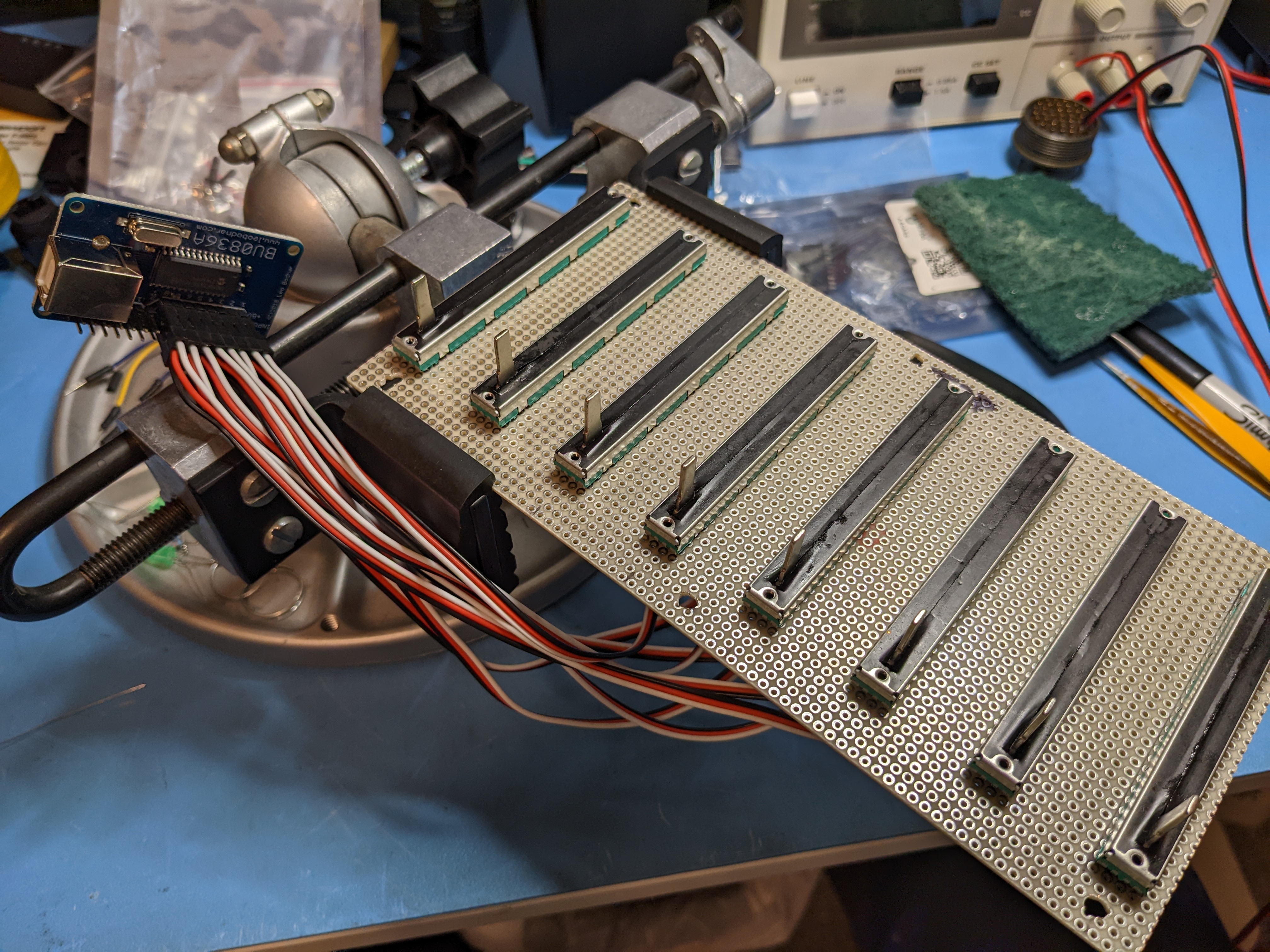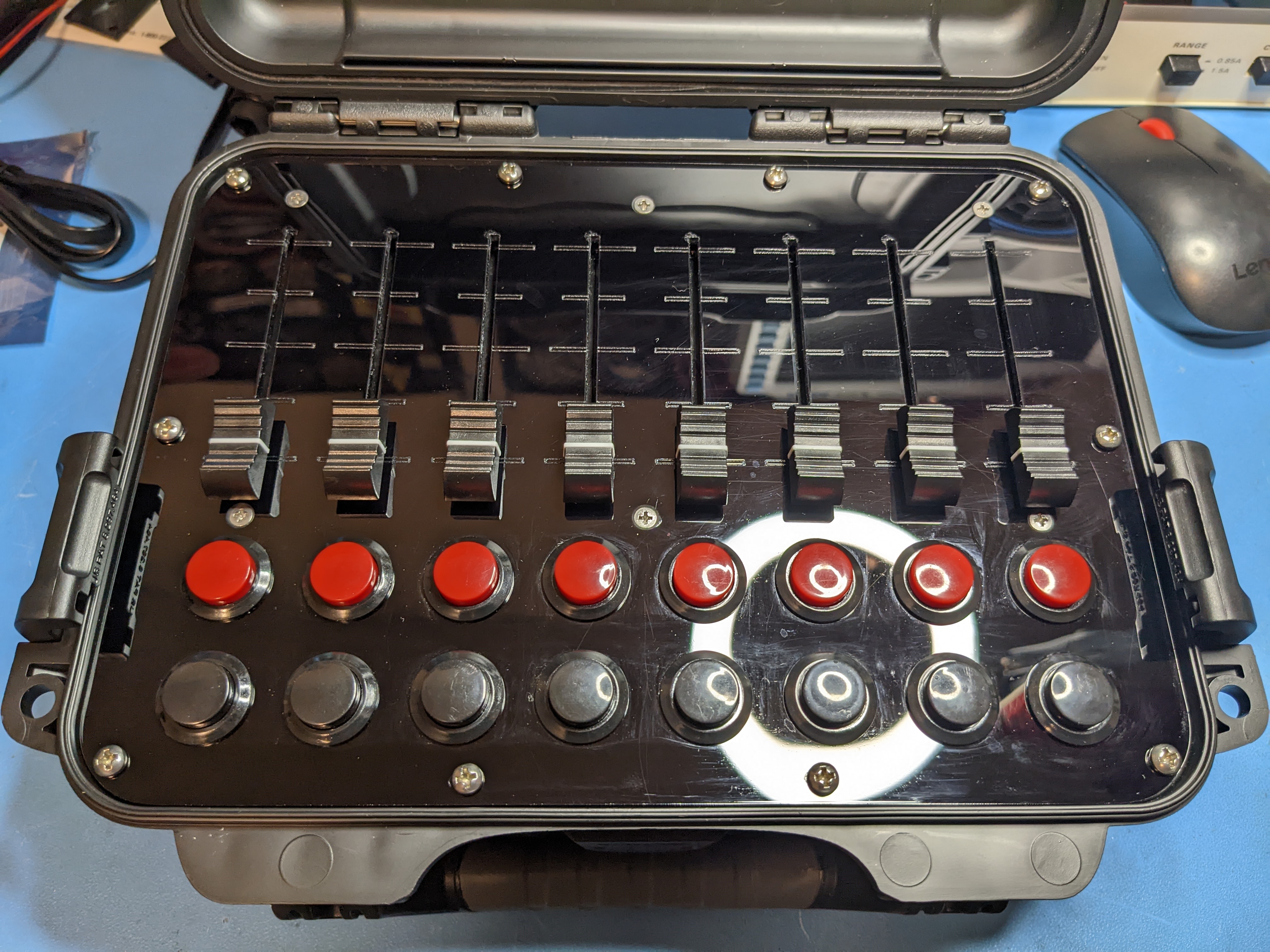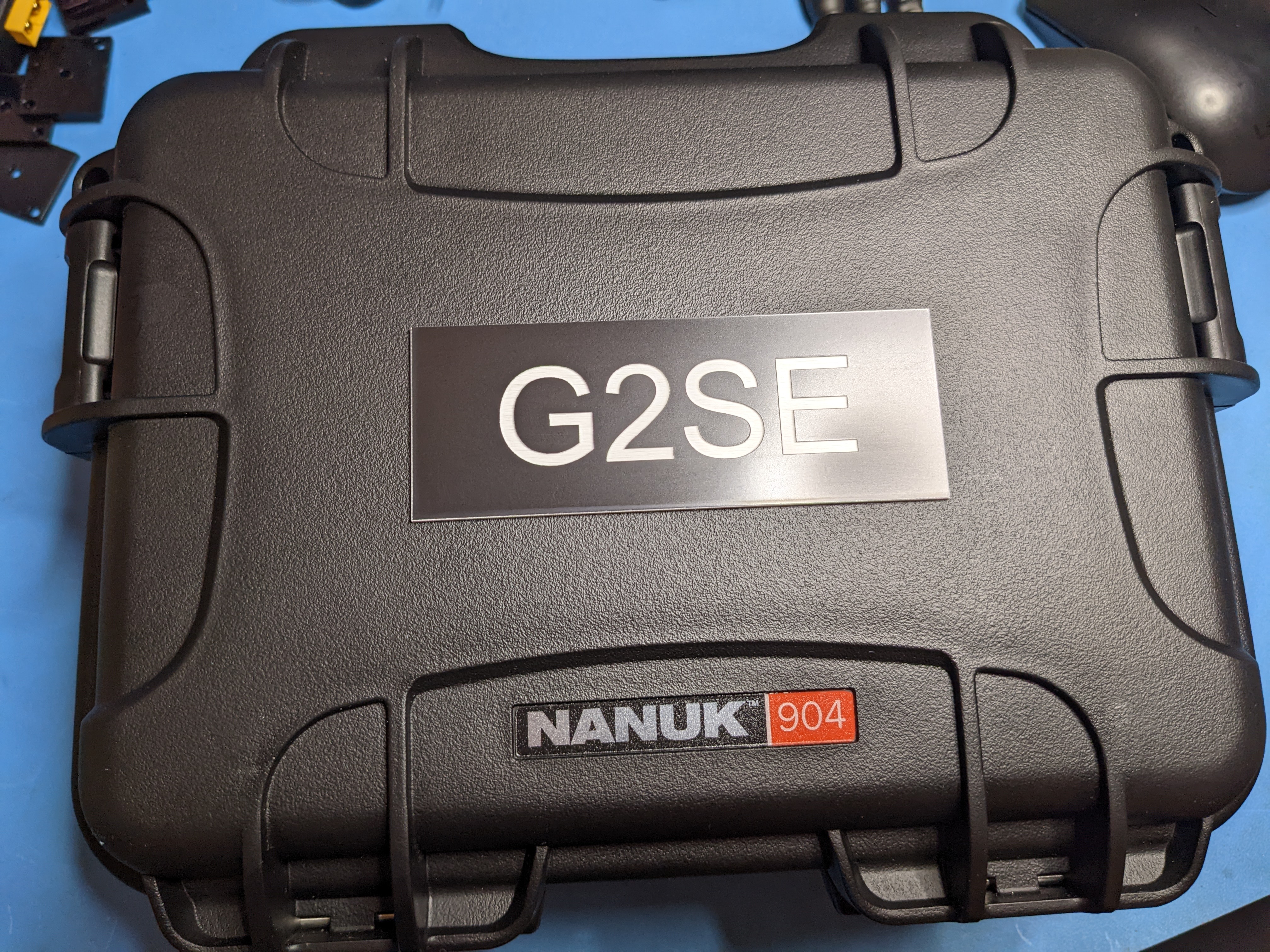Gilder-Ground Support Equipment

For configuring Gilderfluke based animation control systems for the Rose Parade, I need a handful of computer accessories which are only available as individual components and would be both expensive to purchase and annoying to carry in the field. I built my own Gilder-Ground Support Equipment, or G2SE, box which combines several of these devices in a convenient rugged enclosure.
The first element to tackle is joystick inputs. Gaming oriented joysticks like those made for flight simulators tend to have a low analog resolution. While that’s fine for gaming, that quantization noise can be a serious inconvenience as you’re manually commanding large animatronics mechanisms.

The eight sliders are simple 75mm slide potentiometers mounted via a rather large piece of generic perfboard, which are monitored by a BU0836A 12-bit USB joystick interface controller which also handles the 16 button inputs.

The slider perfboard and buttons are mounted to a laser cut acrylic panel which mounts directly to the preexisting panel mount interface of a Nanuk 904 enclosure.

The joystick adapter is connected to the G2SE’s internal USB hub, which provides another accessory need - a USB to ethernet adapter. None of my laptops have an ethernet port, so this allows me to connect to various networks. In the animation system I designed for Artistic Entertainment Services, all of the internal serial communication within the main enclosure is routed to a set of ethernet to serial adapters, which can be accessed by means of an ethernet switch located in the main enclosure and a single ethernet cable connected to my G2SE.
Connected to the USB hub are also a set of USB to serial adapters. A RS-422 adapter is provided to an external RJ45 connector which can be shoehorned into an RJ12 connector, which is standard for Gildergear such as the Br-EFB 4 channel PID controller which I use extensively. The other USB serial adapter connected to the hub provides basic RS-485 for interfacing with DMX-512 devices via the external RJ45 or 5-pin XLR connectors. The adapter shown has since been replaced with a fully compliant DMX adapter.

The rubber flaps provide some level of mitigation for dust, dirt, seeds, and other random float decorating material ingress.

